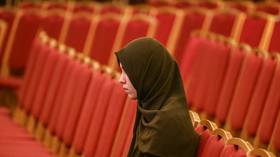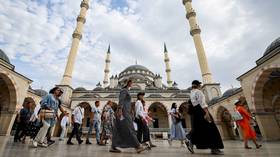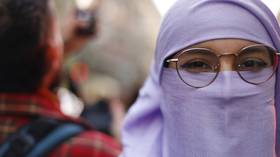Russian region bans Muslim headdress from schools

Local education authorities in Russia’s Vladimir Region have banned students from wearing religious clothing, including hijabs and niqabs, as part of new dress code measures for schools.
In a document published on Saturday, the regional Ministry of Education and Youth Policy said a new clause had been added to its rules on the “standard requirements” for student clothing in primary, basic, and secondary general education.
The amendment stipulates that “clothing and its elements demonstrating the religious affiliation of the student (including hijabs, niqabs, etc.)” are not allowed in educational institutions. The rules are in accordance with the Russian Constitution as well as federal law on religious associations and education, and did not specifically target Muslim clothing, the ministry stated.
“The established requirements for school clothing and students' appearance, regardless of their religious affiliation, ensure the secular nature of state and municipal educational institutions and maintain religious neutrality within them,” the ministry explained in a post on VK on Sunday. The new policy will take effect one week from the date of publication.
Worn by some women of the Islamic faith, the hijab is a type of scarf covering the head and neck, while the niqab is a veil that covers the face entirely, leaving only a slit for the eyes.
Vladimir Region is 200km east of Moscow and is predominantly populated by ethnic Russians, with less than 1% of residents being Muslims.
Several other Russian regions have recently banned traditional Muslim face and head coverings, citing security concerns. This summer, the wearing of the niqab was restricted in the Muslim-majority republics of Karachaevo-Cherkessia and Dagestan, following a terrorist attack targeting Christian and Jewish sites that claimed the lives of 20 people. In a separate incident, a man dressed in women’s clothing and wearing a niqab opened fire on a police patrol in Dagestan after his car was stopped for a document check.
Kremlin spokesman Dmitry Peskov stated that individuals with covered faces impede law enforcement agencies from fulfilling certain tasks.
“I believe that when such a situation arises, and when the interests of ensuring security dictate such necessity, everyone, including Muslims, should treat this with full respect,” he argued.
Face coverings have also been banned or restricted in several Central Asian countries. Last year, Uzbekistan prohibited the wearing of face coverings in public, with exceptions that did not include religious clothing. Kazakhstan has already banned the hijab in schools and indicated it might expand the measures. Kyrgyzstan has proposed fines for women wearing Islamic niqabs and for men with bushy beards.














